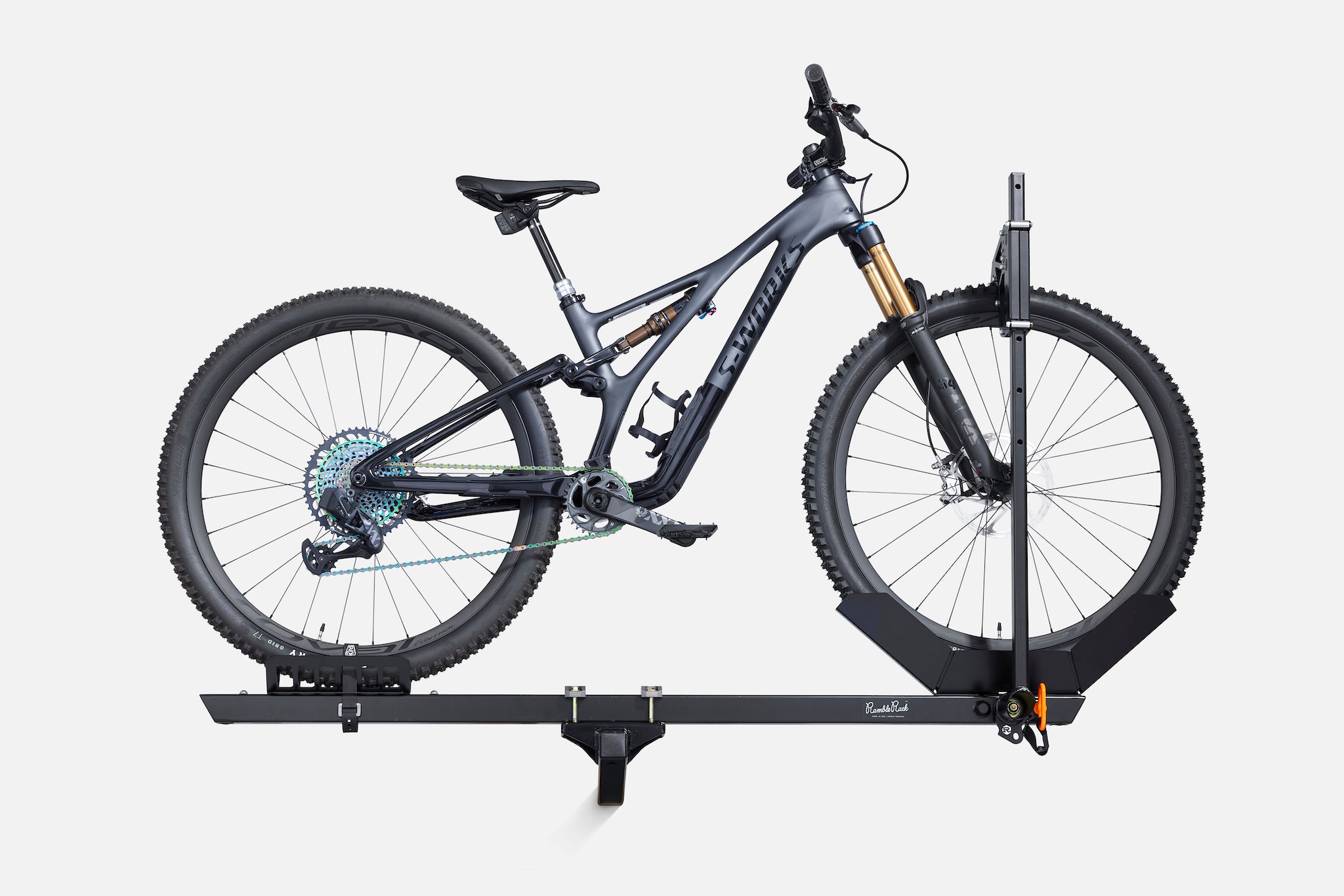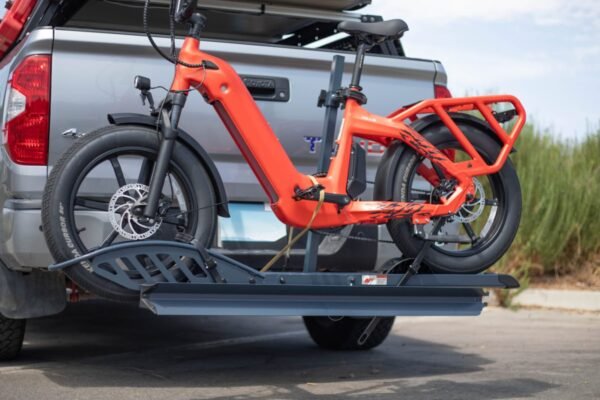Explore the Various Kinds Of Bike Shelf and Their Practical Applications for Cycling Enthusiasts
The variety of bike Racks offered today accommodates the diverse requirements of cycling fanatics. From freestanding to wall-mounted options, each style uses unique advantages for storage space and transport. Mobile Racks additionally give adaptability for those on the step. Nonetheless, selecting the optimal type requires careful consideration of particular demands. Recognizing these variables can make a significant difference in both convenience and safety and security for bikers. What are the key considerations when selecting a bike shelf?
Recognizing Bike Rack Keys In
Various sorts of bike Racks deal with the diverse requirements of cyclists. Among the most common are freestanding shelfs, typically located in city locations, which permit numerous bikes to be protected in a compact room. Wall-mounted Racks serve those with restricted flooring area, providing an effective remedy for home storage space. Furthermore, mobile bike shelfs, designed for simplicity of transportation, interest bikers that regularly take a trip.

Hitch-Mounted Bike Racks
Hitch-mounted bike Racks offer a sensible service for transporting bikes, however comprehending their installation process is vital for effective usage. Users have to likewise take into consideration the weight ability of these Racks to assure safety and stability while traveling. Furthermore, compatibility with numerous vehicle types plays a significant duty in figuring out the right rack for private requirements.
Installation Process Overview
When choosing a hitch-mounted bike rack, understanding the setup procedure is necessary for ensuring safety and convenience. Initially, the customer has to confirm compatibility in between the car and the shelf's hitch receiver. The majority of Racks are designed for either 2-inch or 1.25-inch receivers. After choosing the proper shelf, the setup starts with safeguarding the rack right into the drawback receiver and tightening the hitch pin or screw to avoid movement. Appropriate placement is vital to ascertain the rack does not obstruct tail lights or license plates. When set up, it is a good idea to examine for security by applying slight stress to the rack. Following the manufacturer's directions will certainly ensure a successful installation, promoting a risk-free cycling experience on the road.
Weight Capacity Considerations

Compatibility With Automobile Types
Selecting the appropriate bike shelf involves confirming compatibility with numerous car kinds. Hitch-mounted bike Racks are developed to affix to the rear drawback receiver of a car, making them ideal for a broad variety of vehicles, cars and trucks, and suvs. Nonetheless, it is vital to check the drawback course and weight capacity to confirm a proper fit. Most hitch-mounted Racks are suitable with 1.25-inch and 2-inch receivers, fitting automobiles geared up with proper towing capacities. Furthermore, users ought to consider their lorry's elevation and layout, as some Racks might obstruct rear access or call for added clearance. Ultimately, understanding car specs verifies that cycling lovers can safely transport their bikes without jeopardizing security or performance.
Trunk-Mounted Bike Racks
Trunk-mounted bike Racks offer a functional solution for bicyclists looking for a reliable means to move their bikes. Understanding the installment procedure is important for suitable usage, as incorrect setup can bring about safety and security problems. In addition, taking into consideration the weight ability of these Racks assurances that they can safely hold the bikes without threat of damages or failing during transit.
Installment Process Overview
Lots of cycling lovers value the benefit of trunk-mounted bike Racks for their convenience of use and versatility. The setup process normally begins with unloading the shelf and familiarizing oneself with its parts. Most Racks include flexible straps and hooks created to safeguard them to the car's trunk or hatch. Customers should confirm the shelf is located correctly, straightening it with the lorry's contours for stability. Complying with the producer's guidelines, the bands are then tightened safely, assuring a tight fit. It's essential to inspect that the shelf does not obstruct the lorry's lights or license plate. Validating that all links are safe and secure prior to loading bikes is vital for secure transportation. Proper installation boosts both safety and security and performance during cycling trips.
Weight Capability Considerations
When taking into consideration a bike shelf for transferring bicycles, weight capacity is an essential aspect that can not be ignored. Trunk-mounted bike Racks commonly carry weight restrictions that differ relying on the version and style. It is crucial for individuals to inspect these specs to ensure they do not surpass the suggested weight, as doing so can jeopardize both safety and vehicle integrity. Most trunk-mounted Racks can sustain 1 or 2 bikes, with a mixed weight capability ranging from 70 to 120 pounds. Bikers need to additionally think about the weight of their bicycles, especially if they possess much heavier designs like electric bikes. Effectively matching the shelf's weight capability with the bikes' weights guarantees a secure and protected transportation experience.
Roof-Mounted Bike Racks
Roof-mounted bike Racks offer a E Bike Rack structured solution for moving bicycles, giving bicyclists with the benefit of making best use of cargo room. These Racks are developed to hold bikes firmly atop the car, enabling easy access to the rear of the automobile and stopping blockages to the certificate plate or tail lights. They are ideal for individuals that often travel with their bikes, as they can suit different bike styles and sizes.
Installment usually entails attaching the shelf to the vehicle's crossbars, making certain a stable and risk-free fit. Roof-mounted Racks are typically wind resistant and light-weight, which can result in enhanced gas efficiency compared to other kinds of shelfs. Nonetheless, users ought to think about the elevation of their lorry when loading and unloading bikes, in addition to prospective obstacles when getting in garages or low-clearance locations. Overall, roof-mounted bike Racks offer a effective and flexible choice for enthusiastic bikers on the move
Wall-Mounted Bike Racks
Wall-mounted bike Racks give an efficient service for bicyclists seeking to maximize restricted area while safely storing their bikes. These Racks are ideal for city occupants or those with little garages, as they boost bikes off the ground and make use of vertical space. Made from sturdy products, wall-mounted alternatives can fit different bike types, consisting of mountain, crossbreed, and roadway bikes.
Installment is uncomplicated, making it possible for customers to install them in garages, basements, or perhaps outside spaces. Many layouts enable for one or multiple bikes, making them functional for private or family usage. Furthermore, some wall-mounted Racks come with incorporated locks or safety features to hinder theft, enhancing satisfaction for cyclists.
Mobile Bike Racks
Portable bike Racks supply bicyclists a flexible and practical service for transferring their bikes. These Racks are developed for very easy setup and elimination, making them optimal for those that need to regularly switch in between locations or automobiles. Usually light-weight and compact, portable bike Racks can be easily stored in a trunk or garage, alleviating the worry of long-term installments.
There are numerous types of mobile bike racks, consisting of hitch-mounted, trunk-mounted, and roof-mounted alternatives, each providing to various automobile types and bicyclist choices. Hitch-mounted Racks offer stability and availability, while trunk-mounted Racks are frequently much more flexible and affordable. Roof-mounted Racks are great for making the most of cargo area yet might call for some training.
Choosing the Right Bike Rack for Your Requirements
How can one figure out the very best bike rack to suit their particular biking requirements? Recognizing the right bike rack involves evaluating several elements. Initially, one need to take into consideration the type of vehicle used for transport, as Racks are developed for different installing systems, such as trunk, drawback, or roof. Next, the variety of bikes to be lugged is necessary; some Racks fit only one, while others can hold multiple bikes successfully. Furthermore, identifying the weight and frame design of the bikes is considerable, as certain Racks are much better fit for heavier or distinctly designed bicycles. Designated use ought to be taken right into account; regular vacationers may favor a more mobile option, while periodic users may focus on simplicity and convenience of installation. By meticulously weighing these factors to consider, individuals can choose a bike shelf that satisfies their demands and enhances their biking experience.

Often Asked Questions
Can Bike Racks Accommodate Different Bike Sizes and Styles?
Bike Racks differ in style, enabling holiday accommodation for various bike sizes and designs. Some Racks feature adjustable parts, while others are particularly tailored for sure bicycles, ensuring secure storage space and simple accessibility despite the bike's specifications.
How Do I Properly Secure My Bike on a Rack?
To appropriately secure a bike on a shelf, one need to guarantee the framework and wheels are firmly attached using bands or locks, inspecting for security and preventing activity during transportation to avoid damages.
Are Bike Racks Easy to Get Rid Of and install?
Bike Racks differ in installation complexity, yet many are created for user-friendliness. Detachable designs commonly provide uncomplicated setup and removal, while irreversible installments may need devices and even more time, depending on the certain layout.

What Materials Are Bike Racks Normally Made From?
Bike Racks are normally made from products such as plastic, steel, and aluminum. E Bike Rack. Steel gives durability and strength, while light weight aluminum uses light-weight mobility. Plastic options are often designed for convenience of usage and cost
Do Bike Racks Affect Fuel Efficiency When Driving?
When driving is substantial, the concern of whether bike Racks affect gas effectiveness. Research studies indicate that bike Racks can raise wind resistant drag, potentially bring about reduced fuel performance, particularly at higher rates or with extra weight.
After selecting the ideal rack, the installation starts with protecting the rack right into the hitch receiver and tightening up the hitch pin or screw to prevent movement. Roof-mounted Racks are frequently wind resistant and lightweight, which can lead to enhanced gas performance compared to other kinds of shelfs. Hitch-mounted Racks give security and accessibility, while trunk-mounted Racks are often a lot more affordable and functional. Next, the number of bikes to be brought is essential; some Racks fit only one, while others can hold several bikes successfully. Bike Racks vary in style, enabling lodging for various bike sizes and styles.